AI Model Designers play a key role in creating intelligent systems that can process data, learn patterns, and make decisions. They define the architecture of the model, ensure its scalability, and optimize its performance for various applications.
Skills required for an AI Model Designer include a strong understanding of machine learning algorithms, proficiency in programming languages such as Python, and the ability to analyze complex datasets. Additionally, they must harness problem-solving skills and communicate insights effectively.
Candidates can write these abilities in their resumes, but you can’t verify them without on-the-job AI Model Designer skill tests.
In this post, we will explore 7 essential AI Model Designer skills, 6 secondary skills and how to assess them so you can make informed hiring decisions.
Table of contents
7 fundamental AI Model Designer skills and traits
The best skills for AI Model Designers include Machine Learning Algorithms, Data Preprocessing, Programming Skills, Statistical Analysis, Model Evaluation, Neural Networks and Feature Engineering.
Let’s dive into the details by examining the 7 essential skills of a AI Model Designer.
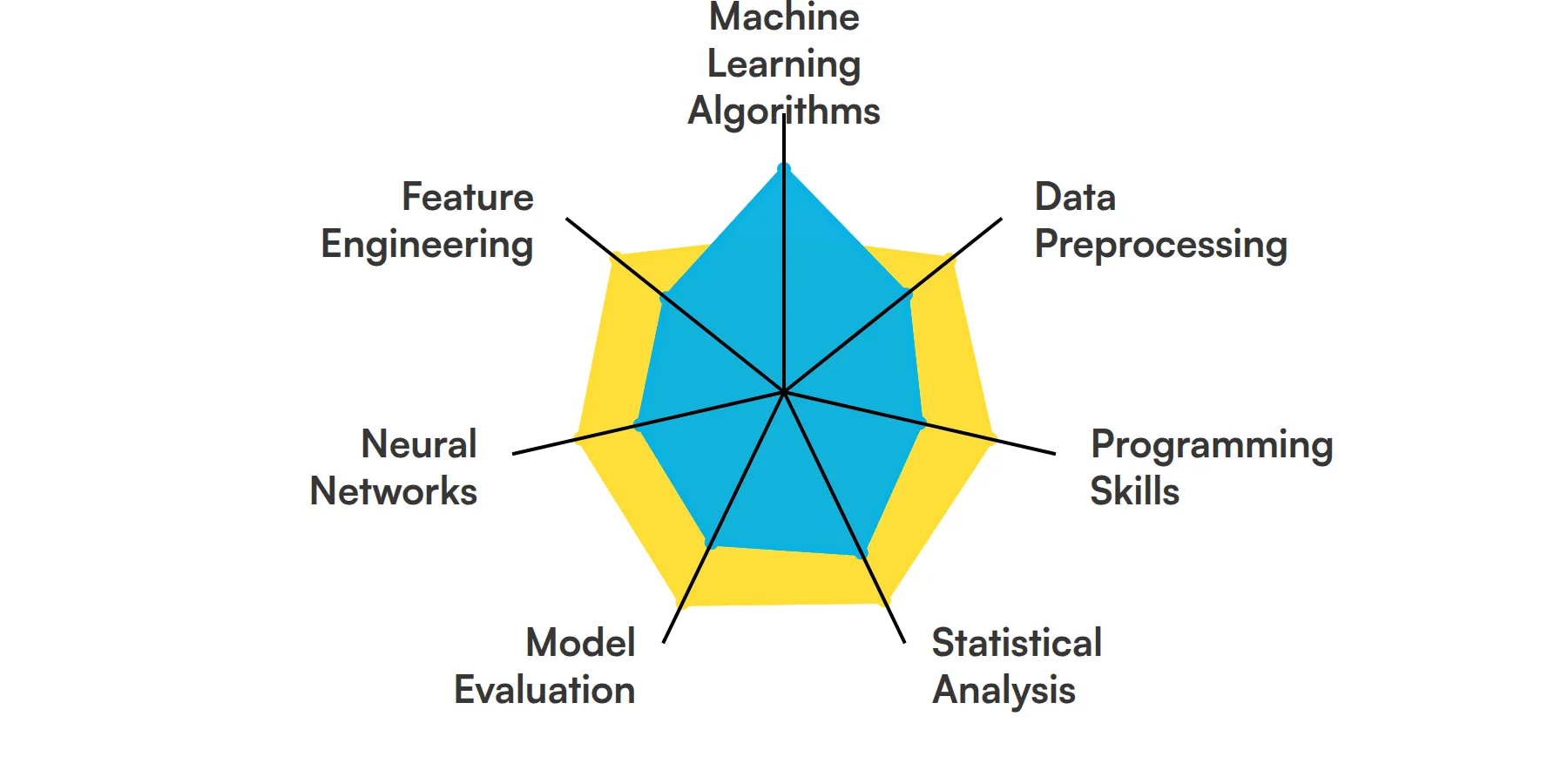
Machine Learning Algorithms
As an AI model designer, you need a solid understanding of machine learning algorithms. These algorithms are the backbone of any AI solution, allowing you to develop models that can learn from data and make predictions. A designer in this role will use them to choose the right approach for each specific problem, whether it involves classification, regression, or clustering.
For more insights, check out our guide to writing a Machine Learning Engineer Job Description.
Data Preprocessing
Data preprocessing is crucial for creating accurate AI models. It involves cleaning, transforming, and organizing raw data into a usable format. Designers in this role employ preprocessing to ensure data consistency and quality, helping models learn effectively and make reliable predictions.
Programming Skills
Programming skills are essential to implement algorithms and automate processes. Python is often the go-to language due to its rich library ecosystem for data manipulation and machine learning. AI model designers write scripts to parse data, train models, and evaluate their performance.
Check out our guide for a comprehensive list of interview questions.
Statistical Analysis
Statistical analysis forms the foundation of understanding data patterns and establishing correlations. In this role, a designer interprets data distributions and variance to make informed decisions on model selection and parameter tuning, enhancing model accuracy and reliability.
Model Evaluation
Evaluating models involves assessing their accuracy, precision, recall, and other metrics to ensure they perform as expected. AI model designers need to efficiently evaluate performance and diagnose issues, allowing for iterative improvements and better decision-making.
Neural Networks
Understanding neural networks is pivotal for designing AI models, especially deep learning models. These networks mimic the human brain's architecture and are used for complex tasks like image and speech recognition. Designers use neural networks to develop models that can uncover intricate patterns in data.
Feature Engineering
Feature engineering enhances the predictive power of models by selecting and transforming variables. As an AI model designer, you will craft features that enable the model to capture important data aspects, thus improving model performance and generalization capabilities.
6 secondary AI Model Designer skills and traits
The best skills for AI Model Designers include Domain Knowledge, Cloud Computing, Version Control, Visualization Tools, API Integration and Automated Testing.
Let’s dive into the details by examining the 6 secondary skills of a AI Model Designer.
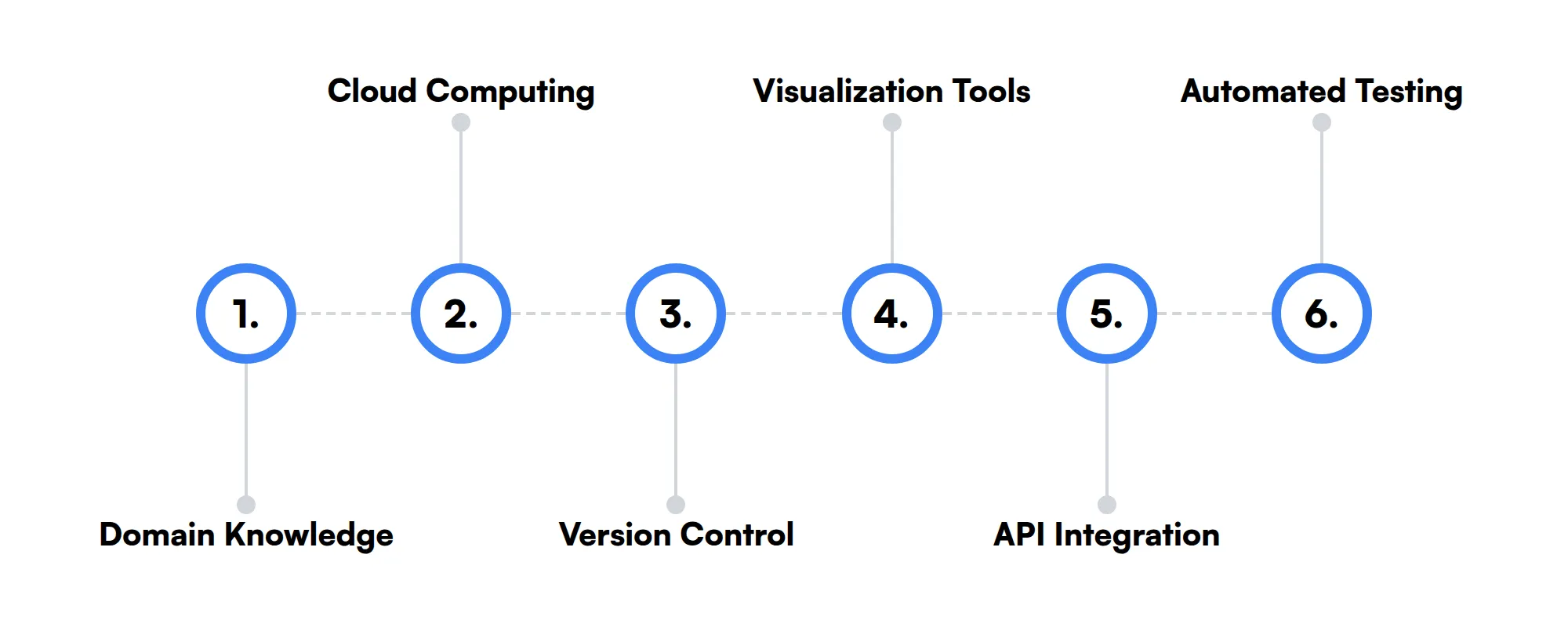
Domain Knowledge
Understanding the specific domain where the AI model will be applied enhances the model's relevance and effectiveness. It helps tailor the model to meet industry-specific needs and challenges.
Cloud Computing
Cloud computing provides scalable resources for processing large datasets and training complex models without infrastructure constraints. Designers can leverage platforms like AWS, GCP, or Azure to efficiently train and deploy AI models.
Version Control
Version control systems like Git are important for tracking changes in model code and datasets. They allow designers to collaborate with teams, revert to previous versions, and maintain a reliable development history.
Visualization Tools
Using visualization tools helps effectively communicate insights derived from data and model outputs. Tools like Matplotlib or Seaborn enable designers to present data-driven stories to stakeholders.
API Integration
API integration skills are important for deploying models into live systems. These skills allow AI model designers to integrate their solutions with existing software architectures, enabling seamless application use.
Automated Testing
Automated testing ensures model performance remains consistent across various scenarios. AI model designers use testing strategies to validate models' accuracy and robustness before production deployment.
How to assess AI Model Designer skills and traits
Evaluating the skills of an AI Model Designer requires a careful approach, as these professionals possess a unique combination of technical abilities and analytical thinking. Understanding how to assess their skills involves more than just checking off a list of qualifications.
It's important to look beyond resumes and certifications, as they often don't reflect a candidate's actual abilities or suitability for a specific role. Skills-based assessments offer a reliable way to measure a candidate’s true competencies. Tools like Adaface on-the-job skill tests can help identify top talent while reducing screening time by 85%.
When assessing candidates for these roles, focus on key skills such as machine learning algorithms, statistical analysis, and model evaluation. Each of these abilities plays a role in designing effective AI models, making them essential areas to examine during the hiring process.
Let’s look at how to assess AI Model Designer skills with these 5 talent assessments.
Machine Learning in AWS Online Test
The Machine Learning in AWS Online Test evaluates a candidate's proficiency in applying machine learning concepts within the AWS environment, a key skill for those looking to leverage cloud services for AI solutions.
This test assesses understanding in areas such as machine learning techniques, data science, and data analysis. Candidates must demonstrate their ability to use AWS DevOps services and Kubernetes effectively. Proficiency in programming languages like Python is also evaluated as part of the AWS-specific skill set required.
Candidates who excel in this test typically demonstrate a thorough understanding of AWS's machine learning capabilities and the ability to integrate these with AWS services to implement scalable machine learning solutions.
Data Wrangling Test
The Data Wrangling Test gauges a candidate's ability to clean, transform, and organize raw data into structured formats, a critical process for any data-driven project.
Candidates are evaluated on data extraction, parsing, and integration skills. The test includes various aspects of quality assessment, validation, and modeling. It emphasizes the candidate's knowledge in interpreting and analyzing structured data sets.
High-performing individuals show talents in transforming complex raw data sets and preparing them effectively for analysis and interpretation. This skill is integral to projects that rely on accurate data-driven insights.
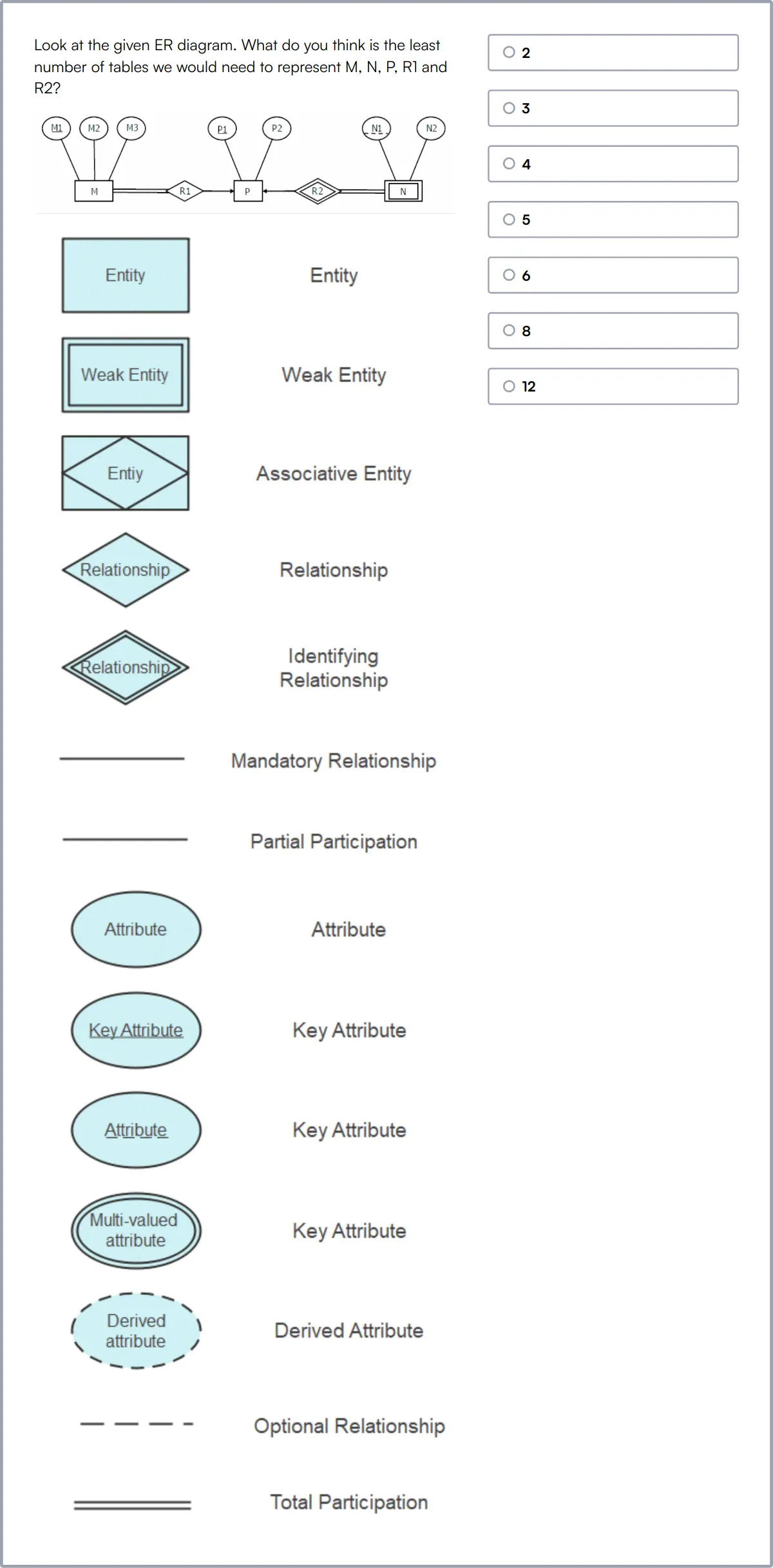
Python Online Test
The Python Online Test evaluates a candidate's skills in using Python to perform various programming tasks, from basic data structures to more complex functionalities such as scripting and database interactions.
The test requires candidates to demonstrate proficiency in Python fundamentals like variables, loops, and functions. Competency in areas such as errors and exceptions handling, OOP, and using Python for database interaction is also assessed. Moreover, it checks their skills in areas like web scraping and functional programming.
This test's results highlight candidates' ability to handle Python-based tasks, including bolstering code with debugging skills that ensure flawless executions. Strong performers typically show a practical understanding of both foundational concepts and advanced Python techniques.
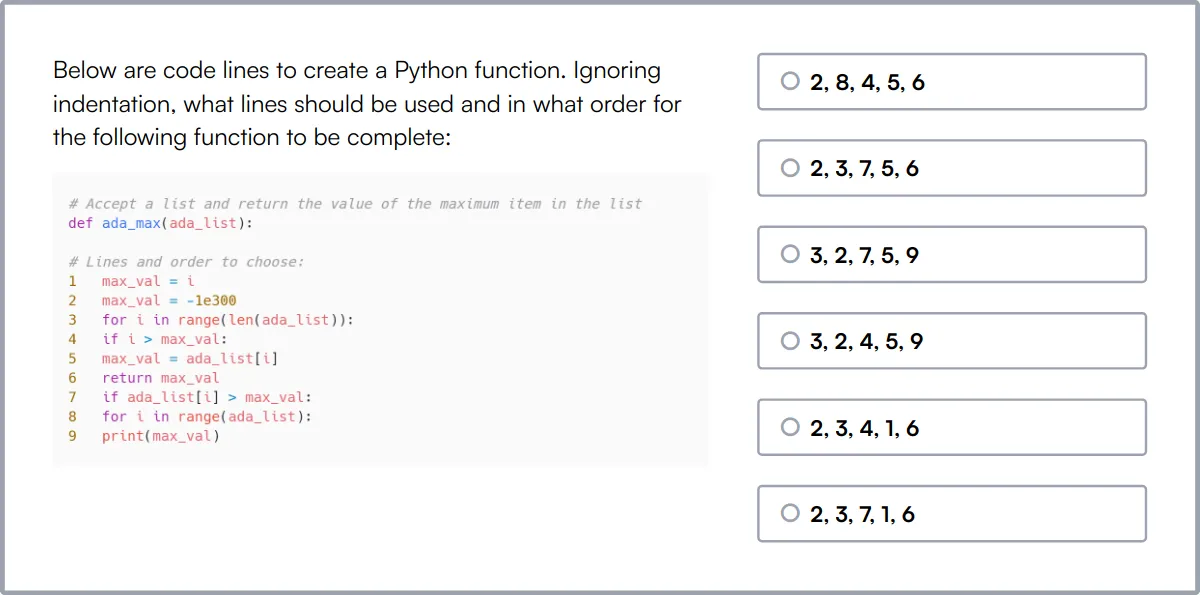
Statistics Test
The Statistics Test evaluates a candidate's proficiency in statistical methods and data analysis, key skills for roles heavily reliant on quantitative reasoning and inferential statistics.
Candidates must demonstrate a sound understanding of statistical fundamentals, including topics like regression, data sampling, and exploratory data analysis. The test also covers inference, focusing on p-values and confidence intervals.
Individuals with strong analytical skills typically show aptitude in using statistics to deduce meaningful insights from large data sets. They exhibit prowess in handling both probability and non-parametric statistics, which are essential for diverse analytical tasks.
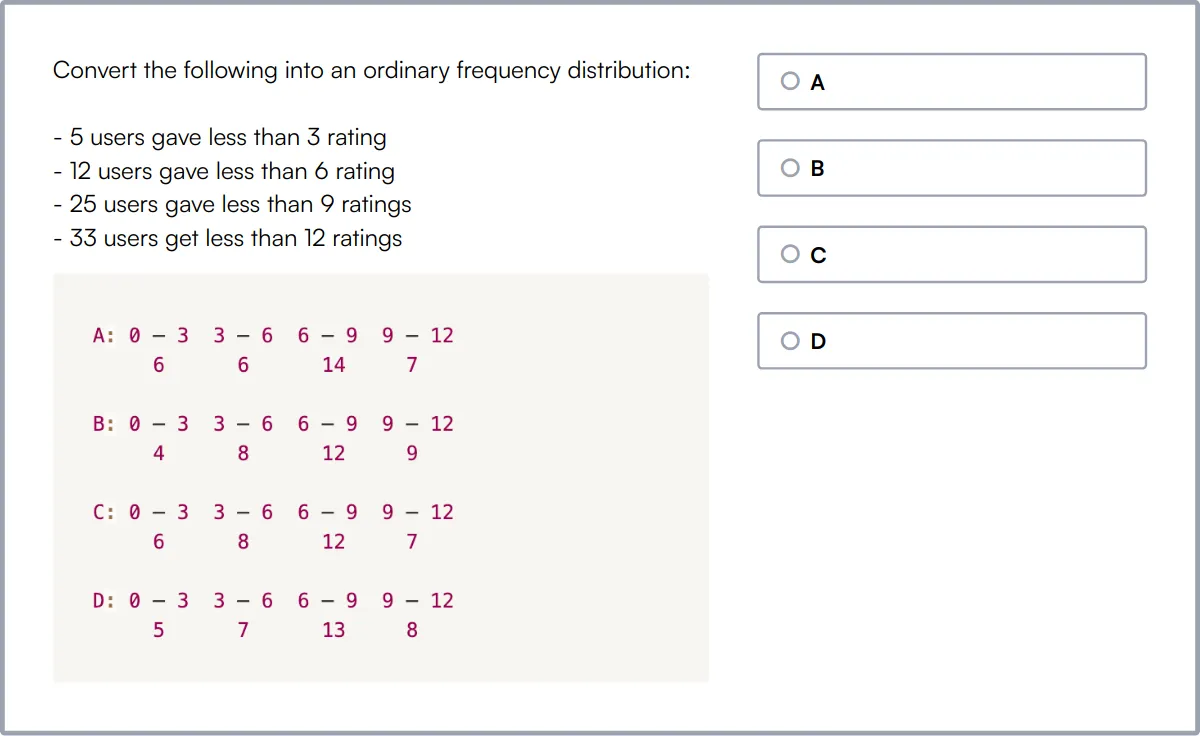
Neural Networks Test
The Neural Networks Test assesses a candidate's knowledge of neural networks and their ability to apply deep learning concepts to data science and machine learning projects.
Participants are tested on their understanding of both shallow and deep neural networks, with additional focus on machine learning and Python skills, using libraries such as NumPy to facilitate calculations.
Successful candidates demonstrate an adept knowledge of how to construct and train neural networks, applying advanced skills with machine learning frameworks to solve complex data problems.
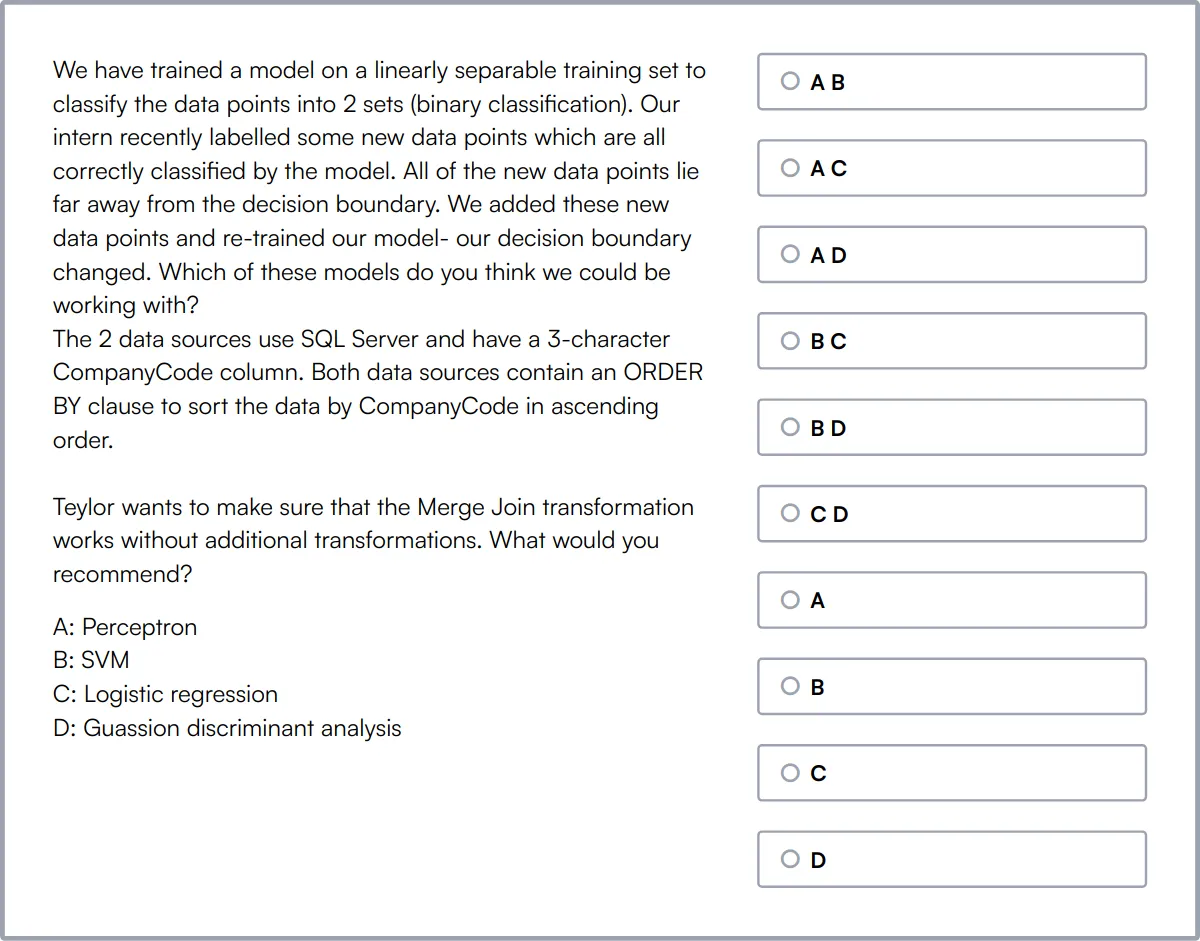
Summary: The 7 key AI Model Designer skills and how to test for them
| AI Model Designer skill | How to assess them |
|---|---|
| 1. Machine Learning Algorithms | Evaluate knowledge in selecting and applying appropriate algorithms. |
| 2. Data Preprocessing | Check ability to clean and prepare data for analysis. |
| 3. Programming Skills | Assess proficiency in coding with relevant languages like Python or Java. |
| 4. Statistical Analysis | Examine skills in applying statistical methods to interpret data insights. |
| 5. Model Evaluation | See how well candidates can assess model performance and accuracy. |
| 6. Neural Networks | Test understanding of designing and training deep learning models. |
| 7. Feature Engineering | Review the ability to create meaningful input features from raw data. |
AI Model Designer Test
AI Model Designer skills FAQs
What programming languages should an AI Model Designer know?
AI Model Designers should be proficient in languages like Python, R, and Java. Python is widely used due to libraries such as TensorFlow and scikit-learn.
How is domain knowledge relevant to AI Model Design?
Domain knowledge helps in understanding the problem better, selecting relevant features, and interpreting the model outcomes. It's crucial for tailoring models to specific industries.
What role does data preprocessing play in AI model design?
Data preprocessing involves cleaning data, handling missing values, and transforming data into a usable format. It's important for building accurate and reliable models.
How can recruiters assess statistical analysis skills in AI Model Designers?
Assess candidates by asking about their experience with statistical testing, probability distributions, and regression analysis. Reviewing past projects can be helpful.
Why is version control important for AI Model Designers?
Version control, using tools like Git, enables tracking changes to code and models. It helps in collaboration and managing different versions of a project.
What tools do AI Model Designers use for data visualization?
AI Model Designers use tools like Matplotlib, Seaborn, and Tableau for creating visual representations of data, which helps in understanding and communicating insights.
How important is cloud computing for AI model design?
Cloud computing offers scalable resources for training models on large datasets and deploying them. Familiarity with AWS, Google Cloud, or Azure is beneficial.
What is the significance of feature engineering in AI models?
Feature engineering involves creating new input variables that improve model performance. It requires understanding the data and domain knowledge to enhance patterns.

40 min skill tests.
No trick questions.
Accurate shortlisting.
We make it easy for you to find the best candidates in your pipeline with a 40 min skills test.
Try for freeRelated posts
Free resources



